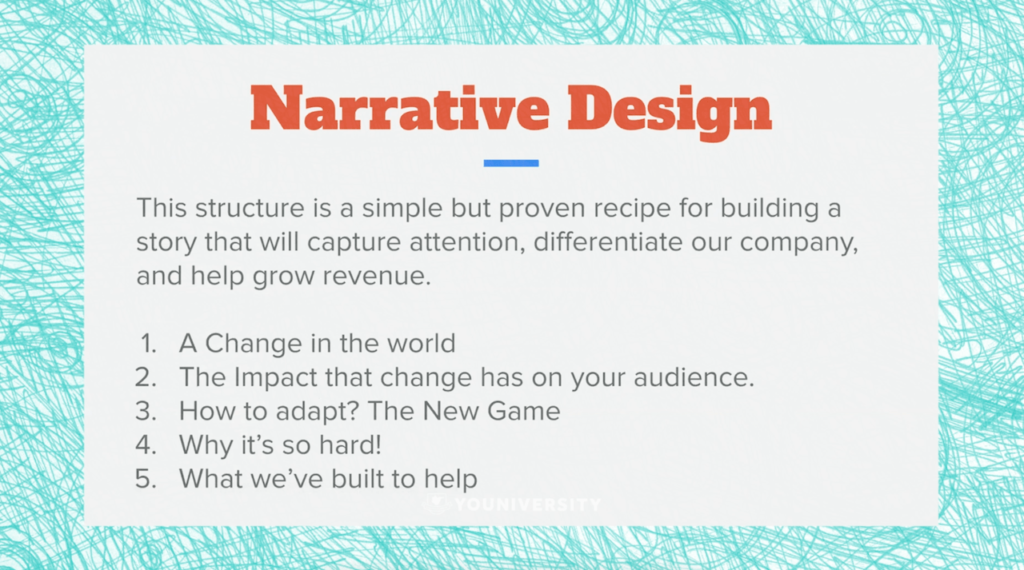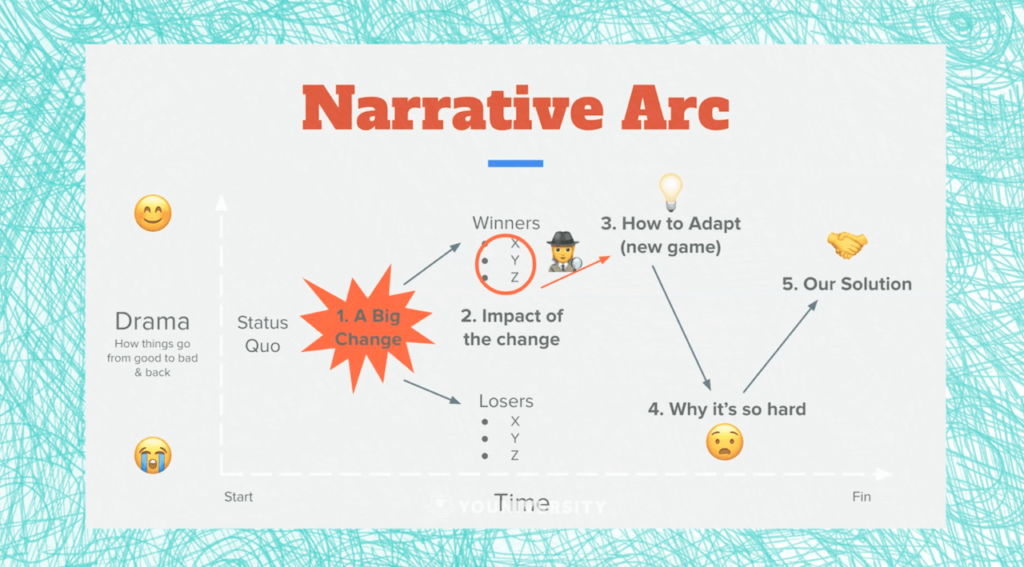
Join MK Getler and Marcus Andrews in this conversation about designing your product narrative with personal experience (PX) in mind. Listen to the full interview here:
Designing Your Product Narrative with PX
Marcus Andrews has spent the last 6+ years learning and executing product marketing initiatives, leaving his 5.5 year stint at HubSpot this year and joining up the team over at Pendo.
With artists for parents Marcus grew up in an environment where creativity in writing and storytelling, which introduced him to his marquee contribution to the product marketing space: Narrative Design.
As the quality of marketing has diminished and the rise of high transactional and velocity selling and marketing, what the world of software has been engulfed by automation.
According to Marcus, when people think:
“What is good marketing?”
What comes to mind is an operational machine that consistently generates leads for the business. Predictable. Consistent. It works.
It’s easier than ever to spin up a company and start this marketing machine. Which leads to more people in your space, yelling louder than you about their products, features, or differentiators, and it’s overwhelming. Not to mention highly impersonal.
The way that companies these days, in spaces more crowded than ever, can stand out against everyone who is trying to yell louder than them is to tell a different story.
Controlling and writing your own narrative and story is not the same thing as creating your own category.
Instead, you’re coming up with a new way of thinking, you’re not just accepting the status quo in your industry and trying to yell the loudest.
And that’s what narrative design is all about.
So, what is narrative design?
Defining Narrative Design
Marcus describes narrative design as a simple but proven recipe for building a story that will capture attention, differentiate our company, and help grow revenue.
The recipe for crafting your Narrative Design looks like this:
Step 1: You identify that there has been a change in the world.
Step 2: You have to translate that world change into how that change has specifically impacted your audience.
Step 3: Then you’re giving people the answer of how to adapt to that change, which we call “The New Game”. Essentially the behavior change that needs to happen in order to solve the world problem affecting the audience
Step 4: Why it’s so hard!
Step 5: Then you introduce what you’ve built to help.
Every one of these steps is crucial when you’re thinking about your company’s narrative arc.
What Is The Narrative Arc?
The components of your arc include a start, a finish, and levels of drama over time.
You have to start your narrative arc by defining the status quo, so people can recognize and understand what is now broken.
But you really have to focus on the Big Change. The change has to be undeniable, a change in the world, a change in human behavior that has nothing to do with your business.
It probably has nothing to do with your target audience.
This splits up the population into two audiences, the winners and the losers based on how The Big Change affects them.
What are the qualities of a winner, what do they have that the losers do not? And usually, those who are winners are the people who have adapted from The Big Change, and tee up the story to talk about how to adapt and play the “New Game”.
So you unpack the winners, you introduce the New Game, but there’s not enough drama in this story yet. Marcus loves drama, apparently.
So once you get to Step 3, you have to explain why it’s so hard to play the New Game.
Maybe you don’t have the resources. Or you have to buy all these separate tools. Or you have to convince your boss it’s important.
Dig into these challenges with your customers because they will tell you why it’s so hard, you’ll understand their pain, and your narrative will be more personal and relatable to your current and future customers.
And then the thing you’ve built is what is going to help them overcome these challenges and play the New Game.
Sounds like a lot to take in, but we urge you to think about Simon Sinek’s teachings: Start with why.
Where to Start With Narrative Design
Starting with a framework is super important when you’re building your own narrative design. So many people are great storytellers but unless everyone, internally and externally, understand what it is that you’re trying to do it will be really hard to sell this concept internally.
After you build your framework, you want to build a core team that starts with company strategy and company vision. So, as you can imagine, your CEO needs to be a part of these conversations.
From there, you start the positioning work. If you work for a larger company this is owned by Product Marketing but if you don’t have company positioning yet then start by understanding your audience, their challenges, the alternative products they use, why they’re interested in your space. Pull that information out of customer conversations and industry research to build your positioning.
From there, go through the five steps of narrative design.
Everyone wants to create a New Game, but nobody wants to put the effort into making it meaningful. So if you want to take your company and your story and your product to the next level, start by doing the work.







